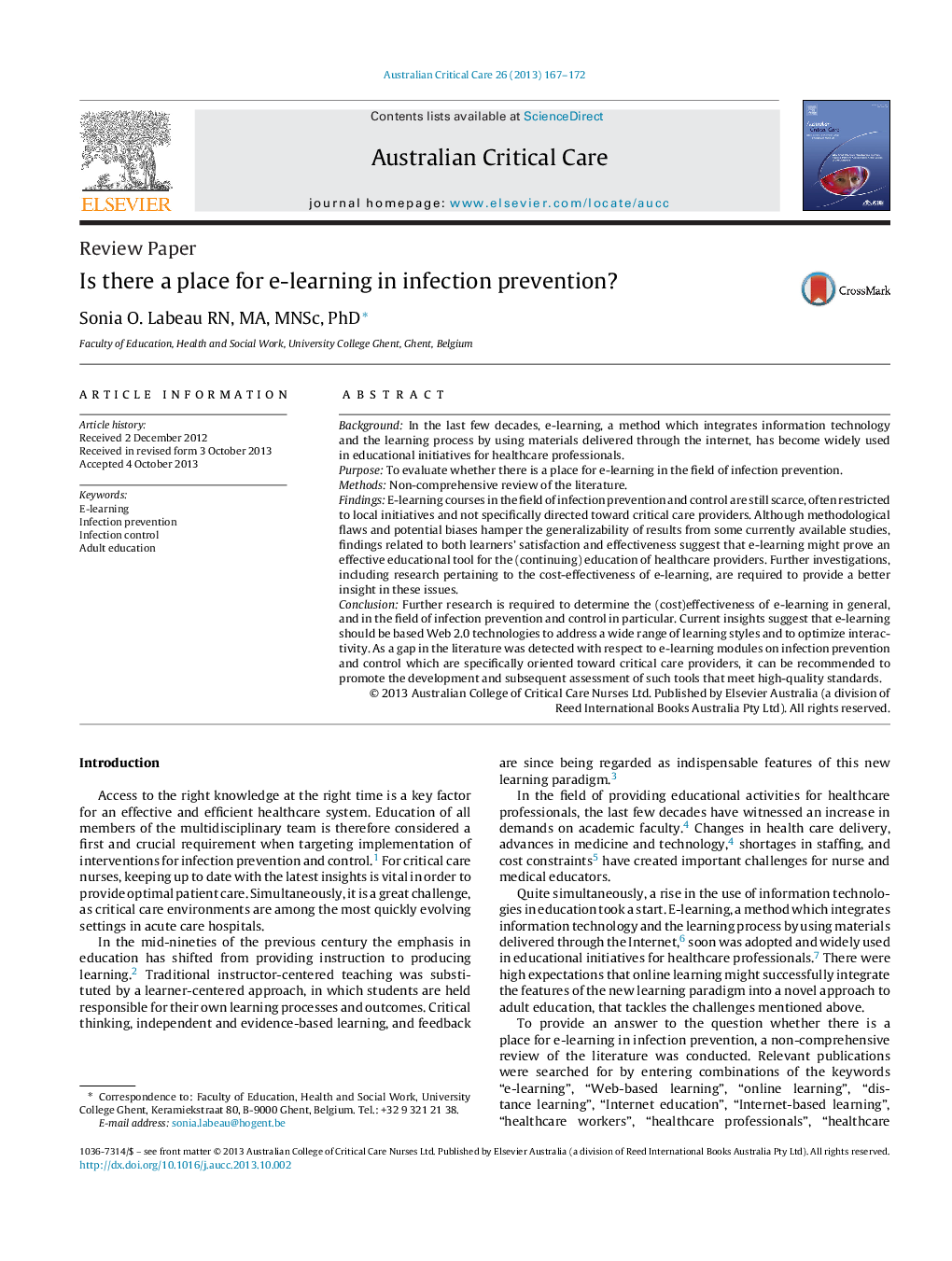| Article ID | Journal | Published Year | Pages | File Type |
|---|---|---|---|---|
| 2607441 | Australian Critical Care | 2013 | 6 Pages |
BackgroundIn the last few decades, e-learning, a method which integrates information technology and the learning process by using materials delivered through the internet, has become widely used in educational initiatives for healthcare professionals.PurposeTo evaluate whether there is a place for e-learning in the field of infection prevention.MethodsNon-comprehensive review of the literature.FindingsE-learning courses in the field of infection prevention and control are still scarce, often restricted to local initiatives and not specifically directed toward critical care providers. Although methodological flaws and potential biases hamper the generalizability of results from some currently available studies, findings related to both learners’ satisfaction and effectiveness suggest that e-learning might prove an effective educational tool for the (continuing) education of healthcare providers. Further investigations, including research pertaining to the cost-effectiveness of e-learning, are required to provide a better insight in these issues.ConclusionFurther research is required to determine the (cost)effectiveness of e-learning in general, and in the field of infection prevention and control in particular. Current insights suggest that e-learning should be based Web 2.0 technologies to address a wide range of learning styles and to optimize interactivity. As a gap in the literature was detected with respect to e-learning modules on infection prevention and control which are specifically oriented toward critical care providers, it can be recommended to promote the development and subsequent assessment of such tools that meet high-quality standards.
